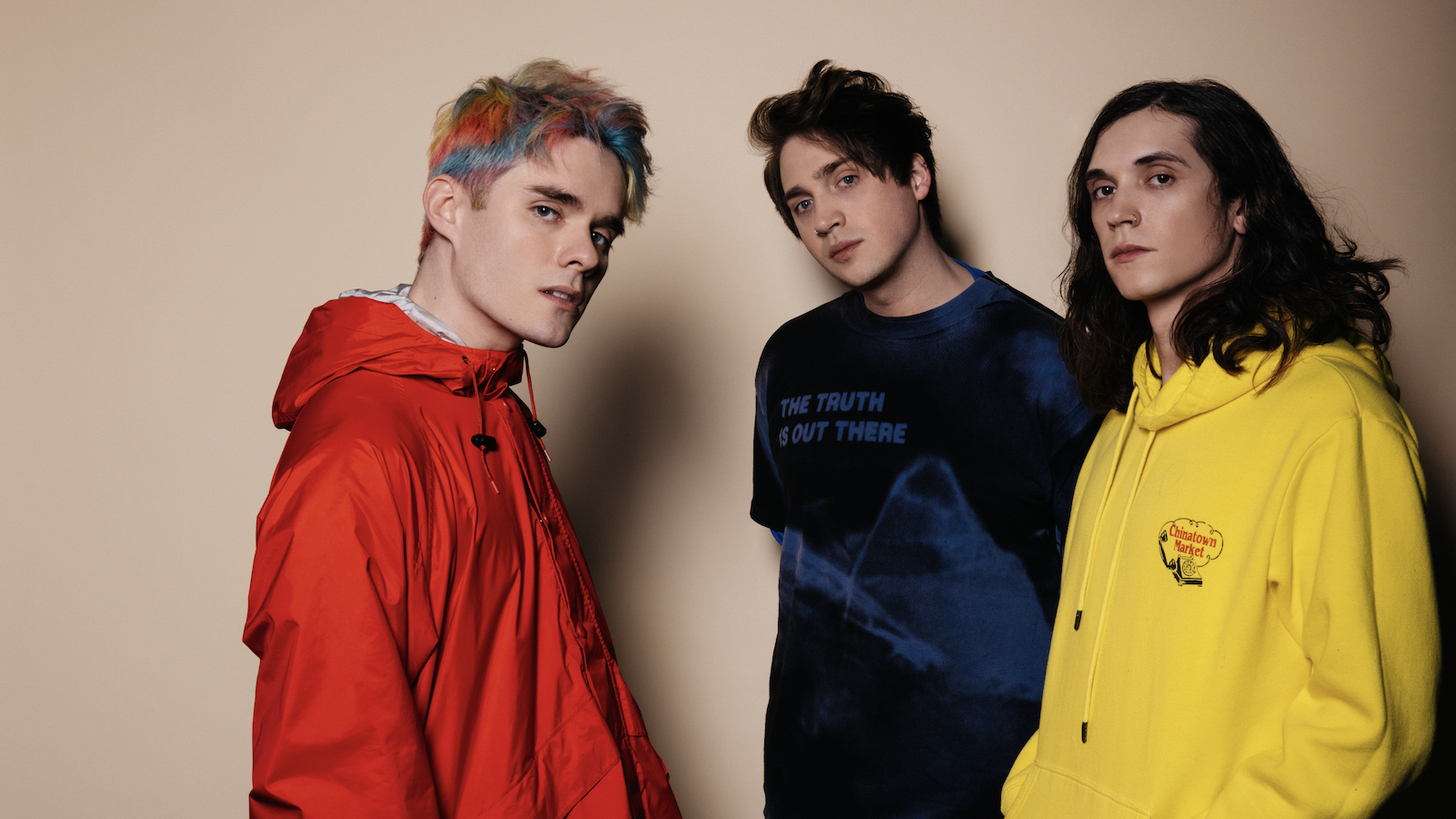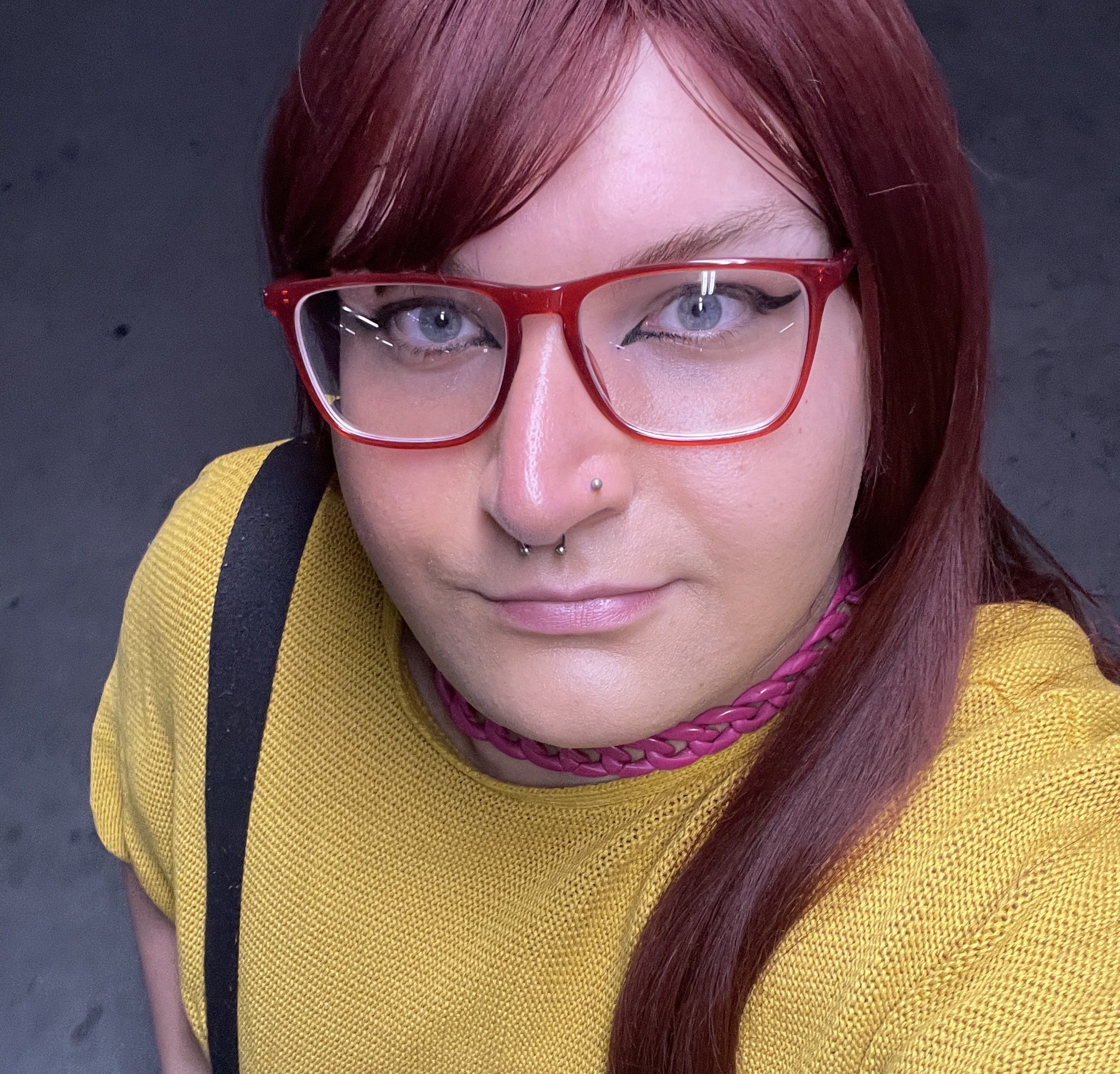Waterparks’ Awsten Knight: “I wanted to make Greatest Hits sound more grand and expensive, and just massive…”
Stacked wall to wall with all-out bangers, it’s hard to believe Waterparks were being completely tongue-in-cheek when they named their new album Greatest Hits

After a century-plus of music’s evolution, the concept of ‘originality’ has started to feel obsolete. If a sound exists, or has the potential to, trust that some agile producer has already found a way to make it bop in 4/4. In the 21st century, innovation is less about what you can invent than what you can do with the elements at your disposal. In recent years, we’ve seen death metal with horn sections, electronic ska, even classic rock written by artificial intelligence. Sometimes I wonder how John Lennon would’ve responded to dubstep.
The point is: genuinely anything is possible. And that’s the core ethos on which Texan pop-punk outfit Waterparks is built. Eschewing the typical monochrome garb and reliance on themes of angst and anxiety, the trio embrace eccentricity with exhilarating aplomb – both in visual and sonic aesthetics. There are hallmarks each Waterparks album must adhere to – plenty of sass, swagger and singalong-suitable hooks – but the filters through which they’ll spin those are powerfully polychromatic; trap beats, guitar solos, ballad-esque piano runs, breakdowns, bass drops – so long as it suits the tune, they’ll find a place for it.
But of course, like any good band in its halcyon days will, Waterparks fight to make each new album more daring and exciting than its predecessor. In the case of LP4, Greatest Hits, that meant going all out with a 17-track behemoth dipping into everything from downtempo house to roaring ‘90s-flavoured alt‑rock. As frontman Awsten Knight explains, inspiration for Greatest Hits came in some rather unusual forms; and at the end of the day, the guitar always reigns supreme – even if it’s used in ways that would make Hendrix roll in his grave.
How did you want this record to really take Waterparks to the next level, or build upon what you’d established creatively on the first three LPs?
Honestly? The writing never stops. I mean, I do so much of it right here [at home] – half the album was recorded right here where I’m sitting. But I knew that with whatever came [after Fandom], I wanted it to be, like, Fandom but further, and in all different directions. Any directions the songs on Fandom started going, I wanted to make it sound more grand and expensive, and just massive… Which is funny considering half of it was made in my f***ing apartment.
But like… I don’t know. That’s the thing – it’s hard to go into a release being like, “This is what we’re going to do.” Because if I’m thinking about a song being for an album, it puts too much pressure on me. If I’m thinking about it like that, I’m like, “It has to be so f***ing good – if it’s not better than anything else we’ve done, I’m not going to let it exist.”
I read somewhere that you went into the studio with over 100 song ideas.
That’s the thing: whenever I’m stuck here and I’m able to record – and that’s kind of all I can do at the moment – the ideas are just going to pour out of me! There were exactly 108 demos that we ended up with.
What drives that influx of creative energy?
There were times where it was a little bit tough, because I don’t just want to do repetitive shit, y’know? So there were certain times when I’d be writing and I’d be like, “I kind of already said that, and in a better way. Damn.” Whenever I hit those days, I would just do instrumentals. One thing I did was I started changing things around in here – I bought a bunch of plants one day and I was like, “Now I feel good!” And then I made, like, ten songs. Then I’d be like, “Ah shit, I can’t think anymore,” so I’d buy some coloured lights and be like, “Okay, let’s do this!”
Get The Pick Newsletter
All the latest guitar news, interviews, lessons, reviews, deals and more, direct to your inbox!
Zakk Cervini mixed and produced a whole bunch of stuff [on Greatest Hits], and right before we went on the last tour we got to do before lockdown, I brought of a bunch of reflective silver panelling into his studio. Then I went to this antique lamp store and got a bunch of different coloured lightbulbs, and I would kind of just put them in different areas of the studio, so it would be reflecting in different ways. I was like, “I’m only going to wear yellow…” It was dope. We made four songs in that session, and three of them are on the album.
So it really does come down to the atmosphere you’re in at the time.
Yeah. And that was the hardest part of the process – because I’m obviously very affected by that, so when I’m stuck in the same f***ing place for a year, y’know, there are definitely days where I’m just like, “I don’t f***in’ know!”
I love that no matter how left-field your sound gets, the guitars do still play such a crucial role – even on a track like “Snow Globe” where you’ve got that really warm, rounded bassline driving the melody and that little bit with the wah pedal. What role do you see the guitar playing on a record like this?
With “Snow Globe”, that one was done pretty much exactly a year ago, and it was my first time trying to just freestyle. I made the beat, I layered a bunch of pads and stuff on it and it was super moody. It was really late, I had the blue lights going, ‘cause it was nighttime, and I was just going “nah, nah, nah, nah” over the instrumental. I put each of those vocal tracks on top of each other, right, and the next day I was walking around the building, just listening to all of them layered, and I was like, “Oh this is dope!”
That’s straight-up how the outro happened, because one of those vocal layers was like [hits crazy high note], and another one was like [bassy low note], and I was just like, “Ohhhhhhh! That’s how we’re gonna end that shit!” But when I started adding guitars over it – like big, distorted guitars – I was like, “This feels wrong.” Because the thing is, like, yeah, we’re a band, but I just don’t feel the pressure to be like, “Oh, but if we don’t have guitars go ‘BRRRRR!’ in every song, and if there’s not crash symbols going ‘CSH! CSH! CSH!’ in every song, it’s not a real band song!”
With “Snow Globe”, I was like, “Obviously there still has to be guitars” – and there very much is, it’s just not in the typical pop-punk kind of way. I started with normal acoustic strums and panned them out, and then strummed at the back so it sounded kind of Western, then got the 12-string in there and distorted it, threw on a wah pedal… It’s all about making the song feel as unique and exciting as possible.
There are so many sounds and tonal idiosyncrasies on this record – is it all programmed, or are you much of a slut for analogue gear?
Analogue is tricky for me – especially with this release, because I was stuck here in my apartment for a lot of the recording process. And there are effects on things that aren’t guitars; we were throwing choruses and phasers and flangers on, like, vocals and drums and all this other shit. When there’s something that’s meant for a guitar and you put it on something else, there’s just something about that that just makes it… It’s kind of an attitude, y’know? It makes it feel rock-y – and I think subconsciously, people hear that and go, “Why does this still f***in’ shred!?” Because it’s mixed like a guitar!

Ellie Robinson is an Australian writer, editor and dog enthusiast with a keen ear for pop-rock and a keen tongue for actual Pop Rocks. Her bylines include music rag staples like NME, BLUNT, Mixdown and, of course, Australian Guitar (where she also serves as Editor-at-Large), but also less expected fare like TV Soap and Snowboarding Australia. Her go-to guitar is a Fender Player Tele, which, controversially, she only picked up after she'd joined the team at Australian Guitar. Before then, Ellie was a keyboardist – thankfully, the AG crew helped her see the light…
“I suppose I felt that I deserved it for the amount of seriousness that I’d put into it. My head was huge!” “Clapton is God” graffiti made him a guitar legend when he was barely 20 – he says he was far from uncomfortable with the adulation at the time
“I was in a frenzy about it being trapped and burnt up. I knew I'd never be able to replace it”: After being pulled from the wreckage of a car crash, John Sykes ran back to his burning vehicle to save his beloved '76 Les Paul









